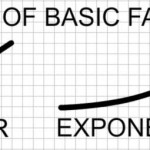There is a clear and audible difference between Exponential and Linear fade-ins for music and vocals. Exponential Fade-Ins usually start at a very low decibel and take a little while to get louder, but once they get to about 50% of where the audio is going to go, they quickly get to the maximum volume that the fade-in is going to specify. This is different from Linear Fade-Ins because linear fade-ins grow to the maximum allotted volume at a constant rate. What is interesting is that the amount of time that the fade-in is going to use, directly effects the sound of the fade-in, and the respective type of fade-in becomes more dramatic as the length of the fade-in transition increases. To illustrate this point, a fade-in of 2 seconds is pretty fast. So the choice of fade-in here will be, “Do I want to have the listening jump right into the music after being pulled from white noise or static?” or, “Is there a little lead backbeat kicking in that I want people to munch one before the song starts?” Respectively, if you go with the first question of wanting people to get yanked into a song from some white noise, then an exponential fade-in might sound pretty good. But conversely, if you are going with the second question, and want to constantly ease into the track, then a linear fade-in might make more sense.
But let’s say you have some dense pads or intriguing piano part that you want to fade-in. But you want the fade in to take 10 seconds, instead of 2 seconds. The choice of fade-in type will be much more audible in this situation and will probably make or break your intro. An exponential fade-in will take a long time to get cooking here, and the first 3 seconds will probably go unnoticed as silence to most listeners, especially if it is a crowded party. But after the sound becomes audible the fade-in will be attention getting.
On the other hand, a linear fade-in for this scenario might work if you are doing a constant dance beat or something in 2/4 time that has a marching feel to it. This is because linear fade-ins are of a ratio of 1:1, and the constant audio growth in volume will subconsciously coincide with the steady tempo of the musical piece. Therefore if the drums or bass line have a hook that is chugging and catchy and they show up early within the fade-in, then a linear fade-in may be the way to go.
Exponential fade-ins make a little more sense with dealing with sound effects or rhythmically complex pieces of audio. This is where one wants the attention of the listener to be on the tone, harmonics, and/or timbre of the sounds…instead of the rhythm or beat.
These are definitely not guidelines or rules, they are simply shortcut tricks in order to help visually approach fade-ins when using computer programs. So many computer audio programs allow vector based control of volume, that a quick glance at the two basic types of Linear and Exponential fade-ins never hurts. Remember, experimentation and trial n’ error are the best ways to get the perfect sound for a fade-in. And with vector based volume control, where you use a pencil tool to make dots and then move the dots, one can always make a fade in that starts like and exponential one, then finishes up in a linear fashion.
Also if you ever hear, “inverse exponential” when related to a fade-in, that just means, starting with the low volume and then very quickly getting to the higher volume.
-Tyler
